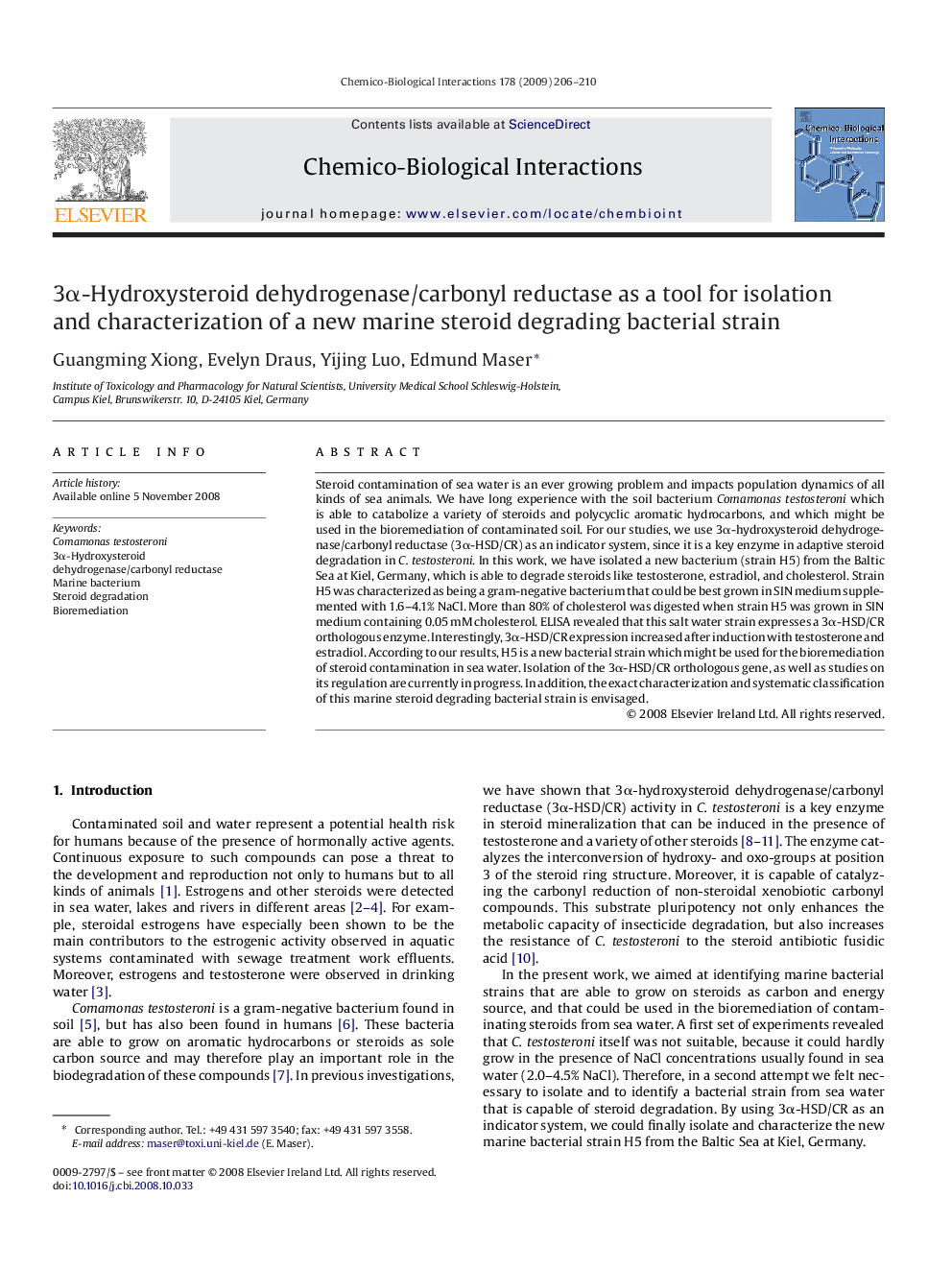| Article ID | Journal | Published Year | Pages | File Type |
|---|---|---|---|---|
| 2582343 | Chemico-Biological Interactions | 2009 | 5 Pages |
Abstract
Steroid contamination of sea water is an ever growing problem and impacts population dynamics of all kinds of sea animals. We have long experience with the soil bacterium Comamonas testosteroni which is able to catabolize a variety of steroids and polycyclic aromatic hydrocarbons, and which might be used in the bioremediation of contaminated soil. For our studies, we use 3α-hydroxysteroid dehydrogenase/carbonyl reductase (3α-HSD/CR) as an indicator system, since it is a key enzyme in adaptive steroid degradation in C. testosteroni. In this work, we have isolated a new bacterium (strain H5) from the Baltic Sea at Kiel, Germany, which is able to degrade steroids like testosterone, estradiol, and cholesterol. Strain H5 was characterized as being a gram-negative bacterium that could be best grown in SIN medium supplemented with 1.6-4.1% NaCl. More than 80% of cholesterol was digested when strain H5 was grown in SIN medium containing 0.05 mM cholesterol. ELISA revealed that this salt water strain expresses a 3α-HSD/CR orthologous enzyme. Interestingly, 3α-HSD/CR expression increased after induction with testosterone and estradiol. According to our results, H5 is a new bacterial strain which might be used for the bioremediation of steroid contamination in sea water. Isolation of the 3α-HSD/CR orthologous gene, as well as studies on its regulation are currently in progress. In addition, the exact characterization and systematic classification of this marine steroid degrading bacterial strain is envisaged.
Related Topics
Life Sciences
Environmental Science
Health, Toxicology and Mutagenesis
Authors
Guangming Xiong, Evelyn Draus, Yijing Luo, Edmund Maser,
